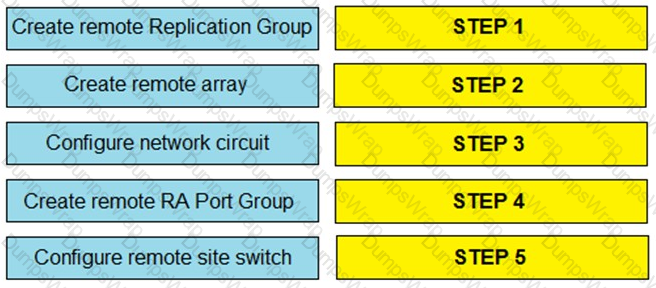Specialist - Technology Architect. PowerMax and VMAX All Flash Solutions Exam Questions and Answers
What is the best practice sizing guideline for front-end FA utilization on a single engine PowerMax array?
What method is used to collect host-based performance data for Windows hosts with BCSD?
Which legacy modes are supported in TimeFinder SnapVX?
What is the maximum number of BTP files that can be included in a project in Sizer?
Which Unisphere for PowerMax feature can a storage administrator use when provisioning new workloads on a PowerMax to maintain a certain Service Level?
An architect is configuring BCSD to design SRDF/S between two new PowerMax arrays. The architect has completed the tasks for the local side of the solution, including RA Port Group, Replication Group, and site switch.
What is the correct order of steps the architect needs to take to complete the SRDF setup?

A storage administrator is unable to terminate the TimeFinder SnapVX snapshot. What action should be performed by the administrator?
The Reserved Capacity for a Storage Resource Pool (SRP) on a VMAX All Flash array is set to 15%. A TimeFinder SnapVX snapshot is created for a Storage Group containing 10 devices. An application is actively performing read and write I/O to these devices. Allocation for the SRP reaches 85%.
What happens to the snapshot?
Which SRDF/A resiliency feature allows sessions to remain active during transient link outages?


